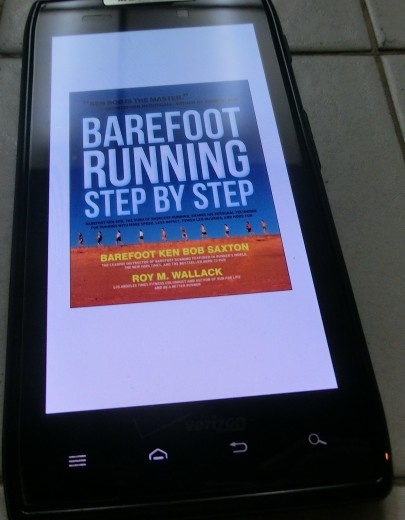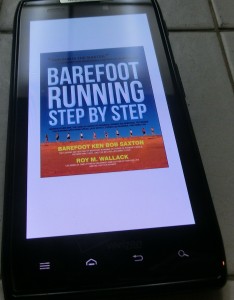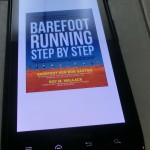Contents
Story
Popular Highlights from the Kindle version of Barefoot Running Step by Step
Bending your knees—a little more than you might think necessary—is easily my number-one principle for fun, injury-free, lifelong running, barefoot or not. [Highlighted by 19 Kindle users]
WHAT TO DO: Land with your foot underneath your center of balance, and let your body move in front of your foot, with your legs bent and your strides short and quick. This causes a slight forward imbalance, a falling sensation, which along with your bent knees springs you forward with littleeffort. [Highlighted by 13 Kindle users]
Calf pain is not a rite of passage; it is mostly a wrong of technique. If you bend the knees more and learn to allow a heel touch after the ball-of-the-foot landing, you should not suffer much, if any, calf pain.
[Highlighted by 9 Kindle users]
Let the hips and torso lead the way. This should feel a bit like falling forward; you’ll need to move the feet quickly under your hips to catch yourself, with each foot landing below—and not ahead of—your vertical body. [Highlighted by 8 Kindle users]
(a link to his excellent paper, simply titled, “Barefoot Running,” can be found at BarefootRunningStepbyStep.com). [Highlighted by 8 Kindle users]
Running fast does not come from lengthening your stride. Long strides come from the body moving forward fast. [Highlighted by 7 Kindle users]
The coolest thing is, if you bend your knees enough, it’s nearly impossible to tense your calves. If you tense your calves, it’s nearly impossible to bend your knees. So, if your calves are tense, bend your knees more. And bending the knee is really the same as lifting the foot. [Highlighted by 6 Kindle users]
Start pulling your foot up and back before landing, so that the speed and direction of your foot travel matches that of the ground. [Highlighted by 6 Kindle users]
move it in a smooth curve—not really a circle, but more of a flat-bottom oval shape. At the bottom of this oval, the foot should be traveling at precisely the speed and direction the surface is traveling beneath us. When it’s done right, it will feel a lot like you’re bicycling. [Highlighted by 5 Kindle users]
I’ve found that if I focus on a foot lift, not a foot push, it is easy to keep my cadence higher. [Highlighted by 5 Kindle users]
Related Links
Gallery
- Barefoot Running Step by Step – Kindle version on smart phone



